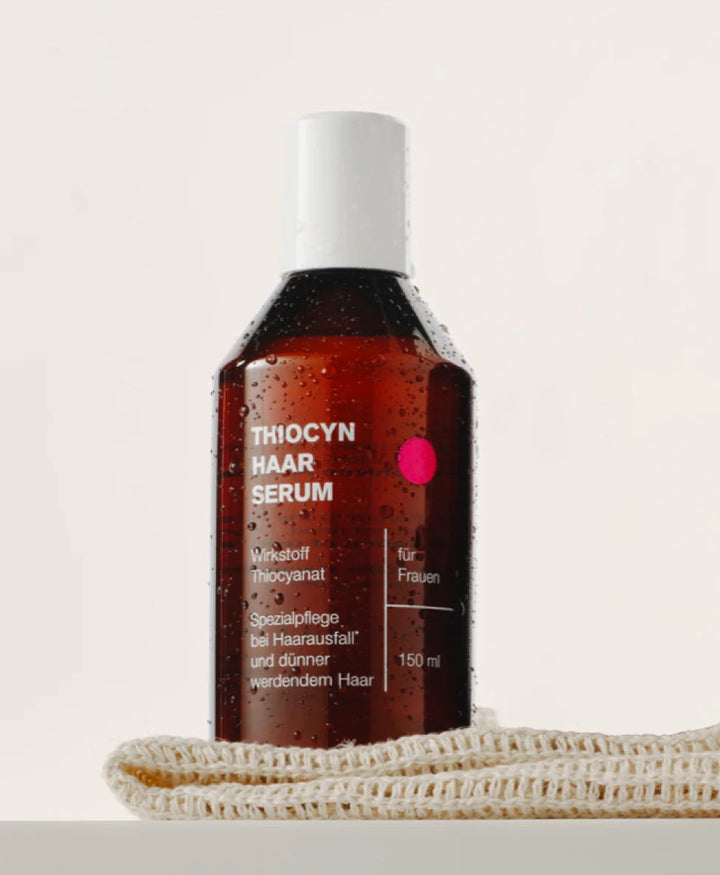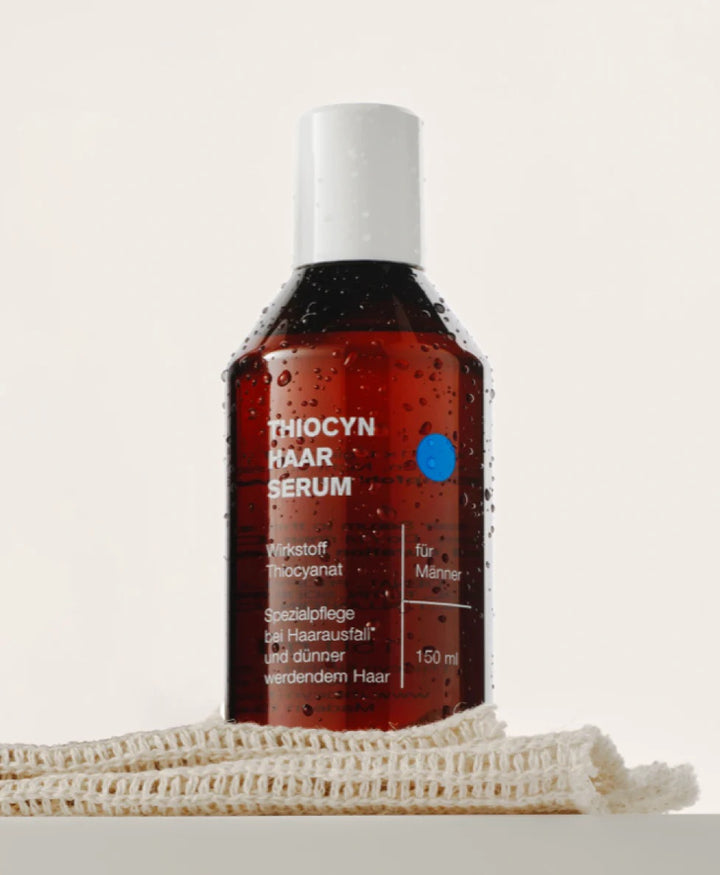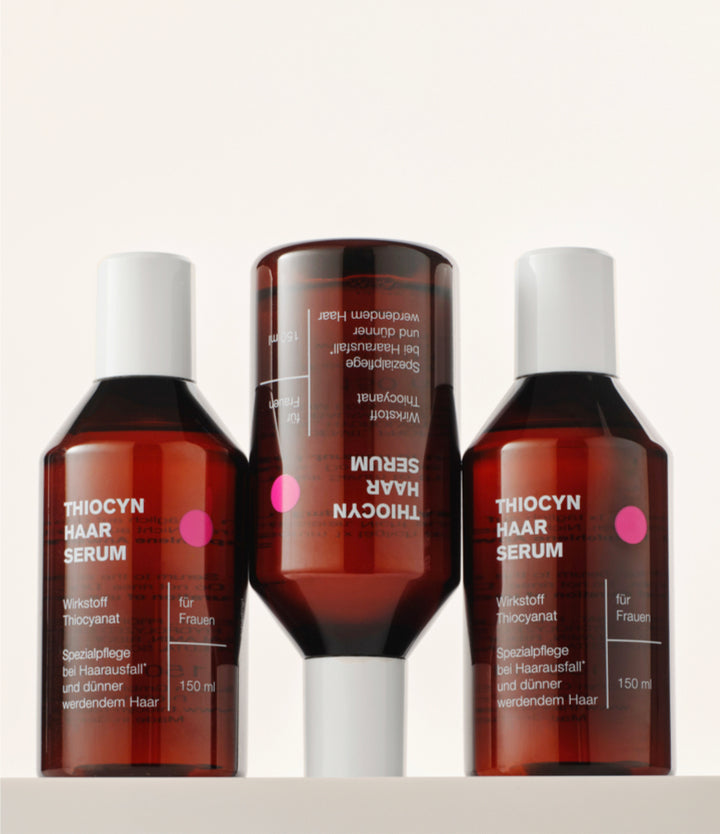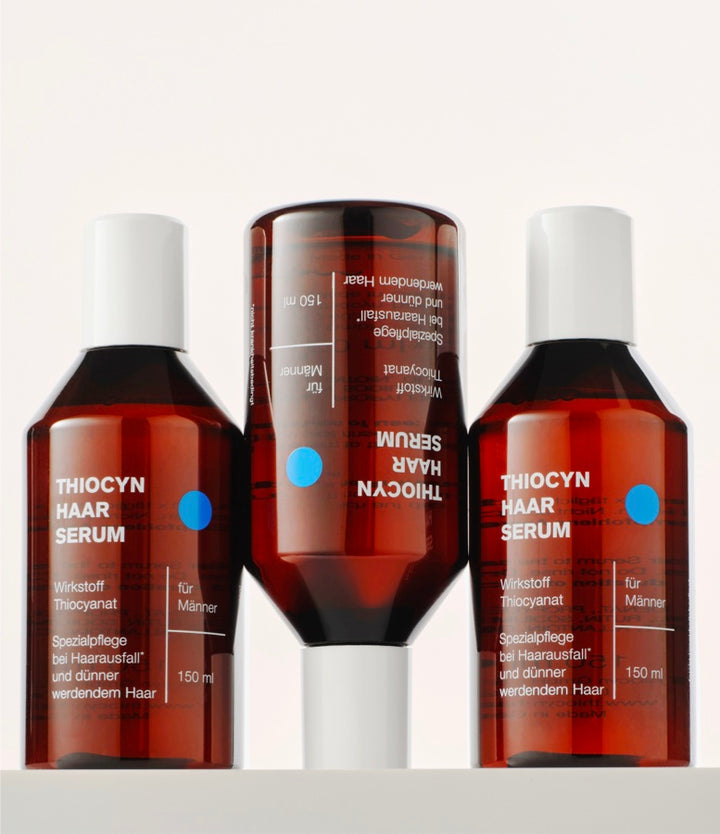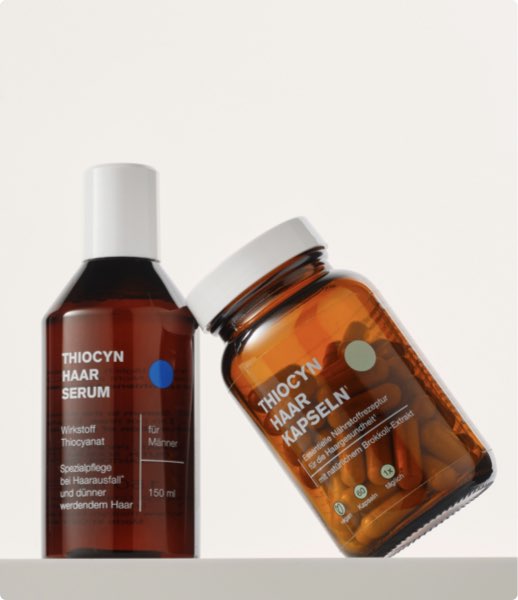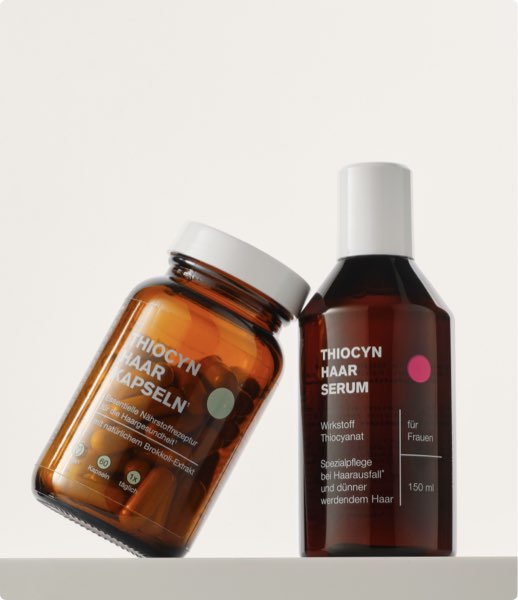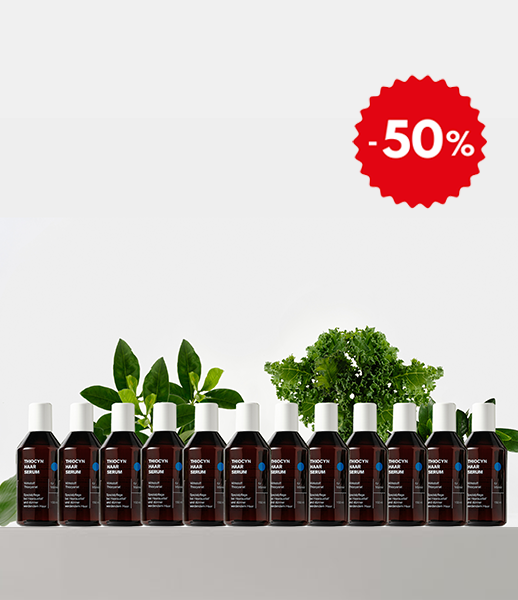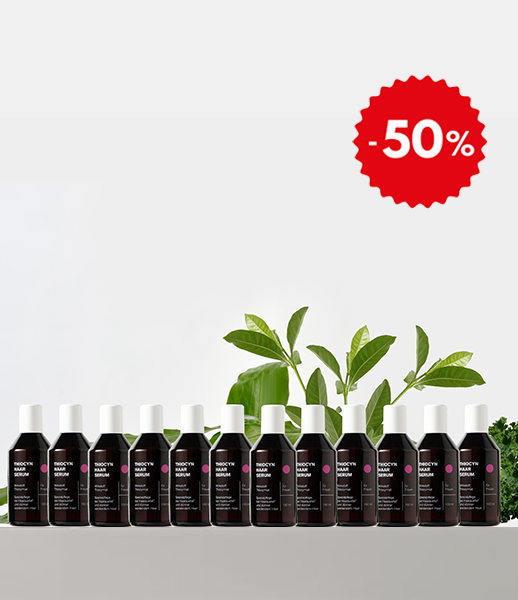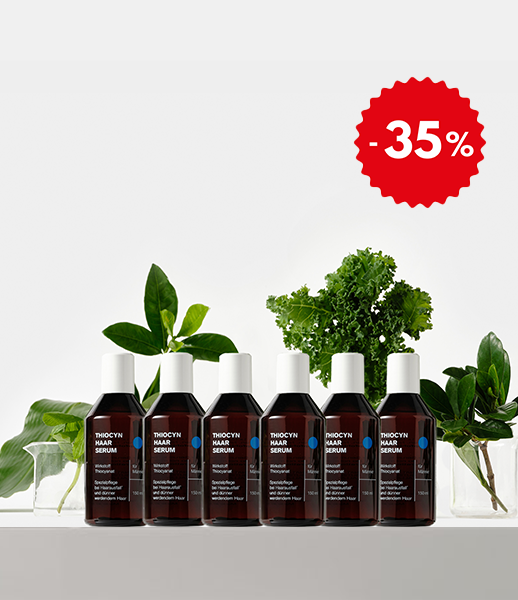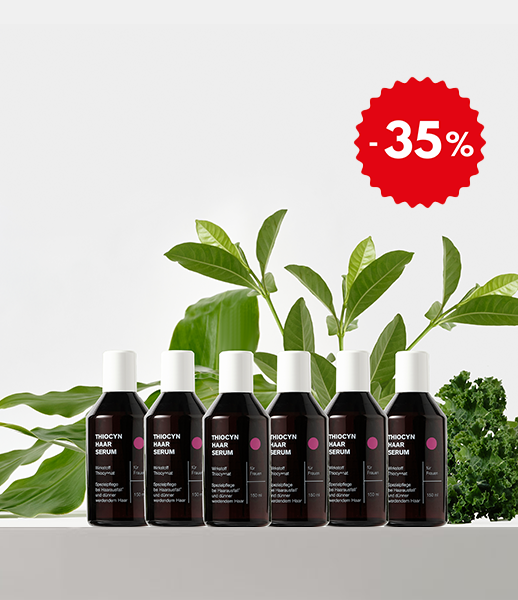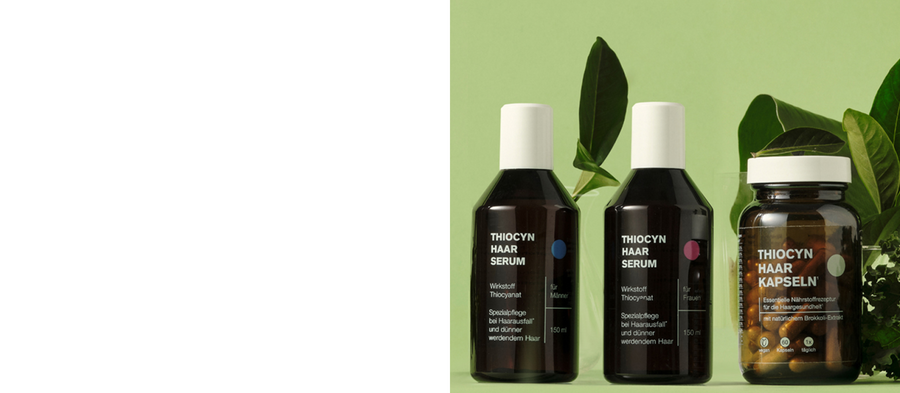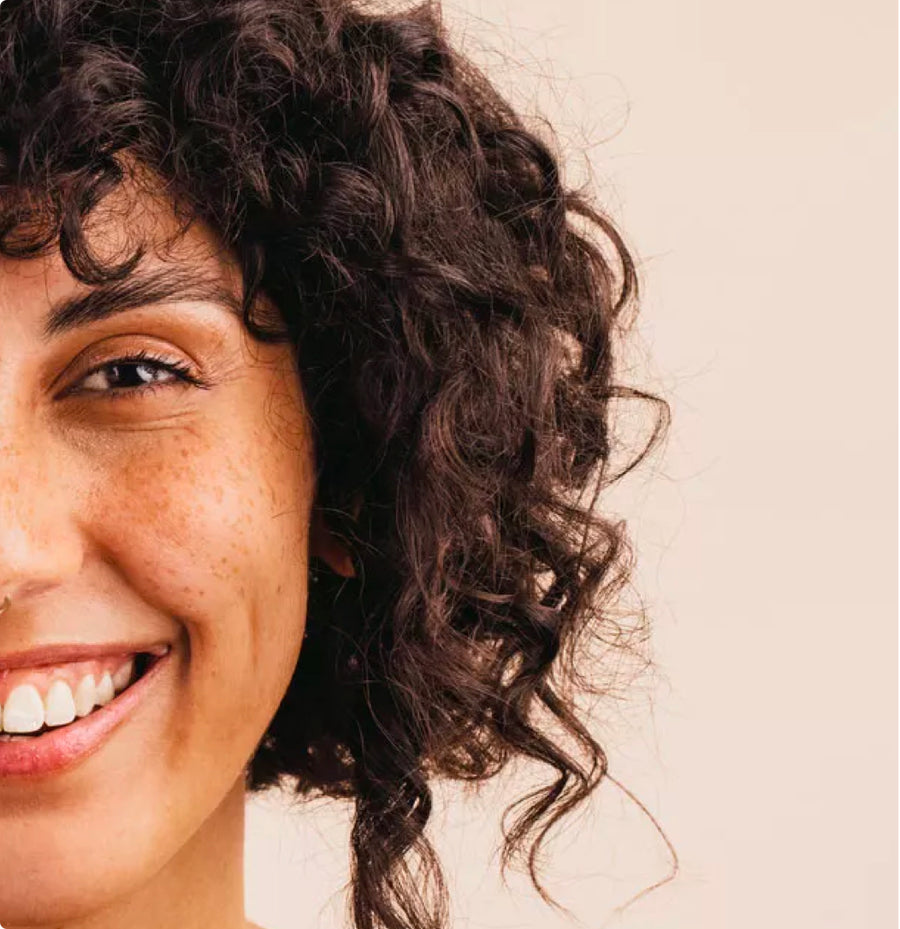| 04. July 2023
Wash hair, but right
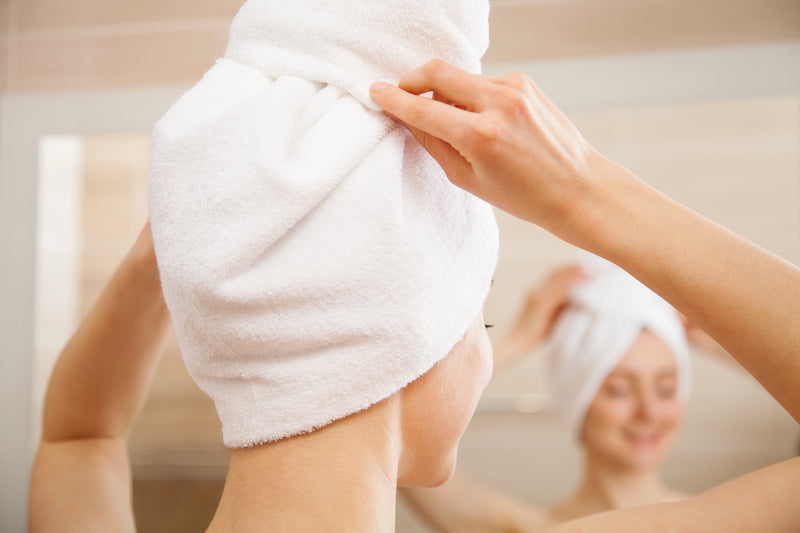
- Washing your hair is the best hair care and the prerequisite for styling hairstyles.
- Shampoos can cleanse hair very thoroughly, especially removing sebum.
- The challenge: Don't degrease your hair and scalp too much when washing your hair.
Washing your hair is a simple body care routine for us: Lather your hair with shampoo over the sink or in the shower, let it work, rinse your hair, dry it, and you're done. Your hair is clean and smells fresh again. However, washing your hair daily is not without its problems for hair quality and scalp balance.
Be careful when washing your hair
The cleaning substances in the shampoo (surfactants) together with the water dissolve dirt particles and residues of styling products, body salts and skin flakes, not least sebum from Hair and scalpThe result: a thorough hair wash. However, if the sebum is completely removed from the scalp, the hair loses its suppleness and is more likely to break. Scalp tends to be dry and is more prone to redness, inflammation and flaking.
Dealing with water
To prevent hair and scalp from being completely degreased, we should avoid using water that is too hot when washing our hair. A water temperature of 30 to 35 degrees Celsius is ideal. If you don't like lukewarm showers—37 to 39 degrees Celsius is comfortable—you can separate body cleansing and hair washing.
It is also a good idea to question the habit of washing your hair with every shower. If large amounts of water run over your head as a result of a longer shower time, not only sebum is dissolved, but also the body's own Thiocyanate rinsed from the scalp. Some dermatologists therefore consider shampoo intervals of three to five days or more to be perfectly sufficient – as long as the hair doesn't become excessively greasy and as long as you feel comfortable with unwashed hair.
Thiocyanate
The primordial molecule thiocyanate regulates or activates the body's own metabolic processes. Thiocyanate affects the skin It has cell-stabilizing, antioxidant, and anti-inflammatory properties for the hair-forming cells. If thiocyanate is lacking, it can be added to the hair externally, preferably after shampooing in the form of Thiocyn Hair Serum. Thiocyn Hair Serum promotes metabolic processes in the skin and hair.
Washing your hair: three care tips
1. lukewarm water 2. mild shampoo 3. air
- Moisten your hair with lukewarm water.
- It is enough to use a little shampoo.
- Lather the shampoo with water in the palm of your hand.
- Massage the foam into your scalp for two minutes.
- Rinse the shampoo out until there is no more foam in your hair.
- Shampooing once per wash is sufficient, except for heavily soiled hair.
- For longer hair, it's sufficient to apply the shampoo only to the roots. Rinsing will allow the lather to reach the ends.
- Do not rub your hair dry.
- Wrap damp hair in a towel; the towel will absorb the moisture from the hair.
- Then let the hair continue to air dry.
- Blow-dry your hair only with lukewarm air, far enough away from your head so that the hair structure cannot be damaged.
The right shampoo
A good shampoo It should lather easily, be mild, and be well-tolerated. The majority of shampoos thoroughly cleanse the hair and scalp without causing any problems. In cases of shampoo intolerance or skin conditions, medicated shampoos are recommended.
Conditioner
After washing your hair, especially long hair, it's recommended to use a conditioner to smooth the roughened cuticles after exposure to shampoo and water. Conditioner gives your hair more natural shine and softness, making it easier to comb.
Washing hair without shampoo
The no-shampoo movement promotes washing hair with water only. The idea is that if you don't lather your hair with shampoo, you're not burdening it with artificial ingredients. Shampoo skeptics report that the sebaceous glands adjust after a while and produce less oil. The problem is that since water alone can't remove excess sebum from the scalp, fungi and bacteria tend to multiply. Greasy dandruff and inflammation can also result.
Shampoo, hair care and hairstyles
Women often complain that they can't achieve their desired hairstyles. For example, women with fine hair who want thicker hair use shampoos and conditioners for damaged hair, believing they're using the right care products. However, these products often contain ingredients like silicones, which make individual fine hairs heavier, causing them to hang flat, and thus further reducing volume.
And after washing your hair:


Read by 23,000 people
Do it like 23,000 others and find out how you can improve your hair health - with great offers and discounts as well as helpful advice
